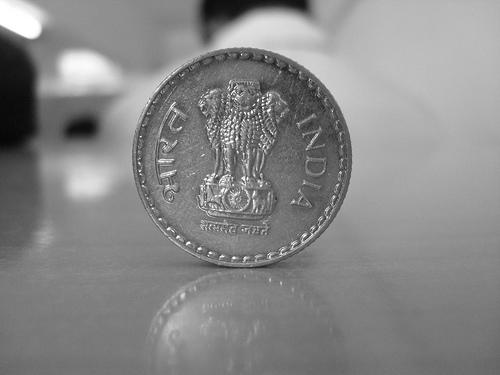
Indian trade and inflation seen to be improving
But full ascent takes time, says UBS.
In its latest monthly India analysis and outlook, UBS Asian Economics said that trade and inflation data are posting encouraging numbers. While these have lent a slight bit of optimisim, UBS warns though to wait and see for potential rate cuts from the Indian central bank.
Here's more from UBS:
What stands out? Trade and inflation data have improved. The temptation is to look for more policy easing. However, seasonally adjusted, the trade balance remains wide and CPI inflation elevated. We do expect further policy rate cuts during calendar year 2013, but the RBI may pause at the 3 May meeting having eased twice during the March quarter. Although the trade balance has improved, we still believe the current account deficit constrains the authorities' ability to stimulate domestic demand.
Following the 19 March policy meeting the RBI said "stage for further monetary policy easing is quite limited". Nonetheless, in early April, RBI Governor Subbarao expressed the hope that "as we go forward, inflation will come down and if that happens, it would be possible for the Reserve Bank to further ease monetary policy".
The latest inflation data was a little mixed in this regard. WPI inflation was again lower than expected at 6% in March, while WPI manufacturing ex-food (the RBI's measure of core inflation) was 3.5%, down from 3.8%. CPI inflation also fell more than expected to 10.4% in March, but remains high in absolute terms. Moreover, excluding food and energy, CPI inflation continued to accelerate to 8.7%.
Declines in the price of oil, alongside other important commodities for India, help the inflation outlook. Lower market fuel prices combined with the increase in diesel prices as part of the reform process have reduced the revenue shortfall from 10 paise per litre of subsidized diesel in January to 6.5 paise per litre in April. That probably contributed to the apparent decision to delay the scheduled monthly diesel price increase in April.
Nonetheless, CPI inflation remains high relative to desired inflation in the low to mid single digits and WPI inflation, although down sharply, is not yet low. The excess capacity that appears to be acting on the wholesale and production sector has yet to clearly depress CPI inflation. That is partly due to high food price inflation, which should slow, but also due to transport and communication (in part due to rising fuel prices). As such it is too early for the RBI to signal the all clear on inflation.
Likewise, although the USD 10bn March trade deficit was half the average level in the December quarter, some of this improvement may have been flattered by seasonal factors. The still wide (seasonally adjusted) deficit continues to limit policy room for stimulating domestic demand. The risk being that too much stimulus simply delivers a re-widening of the external deficit and heightened concerns over financing. Recent falls in oil and gold prices could give the deficit another leg lower and open up more room for more policy support.
Relative to the average prices prevailing in calendar year 2012, current oil and gold prices imply a USD 20-25bn reduction in the trade and current account deficits over a year (or USD 2bn a month on average). Applied to our standing forecast of a 4.6% of GDP current account deficit, this potentially takes the current acc. deficit below 4% of GDP in FY 2014. However, the RBI would probably like to see these price moves sustained for more than a couple of weeks before adjusting policy.
Recent reforms and administrative moves should also ultimately help the trade balance. The restarting of selected mining projects in Karnataka (which were halted in 2011 due to environmental allegations) should, in time, improve net exports at the margin. Meanwhile the modest broadening of export subsidies and liberalization of SEZ regulations announced in the Annual Supplement to the Foreign Trade Policy (2009-2014) should help exports, again over time.
Recent news flow does help the case for looser policy. However, latest data do not remove the concerns relating to elevated inflation or the shortfall in savings relative to investment implied by the external deficit. Policy makers remain constrained in their ability to stimulate the economy. As such, we expect no change in key policy rates at the 3 May meeting but, assuming recent trade and price developments are not reversed, we do expect dovish commentary and further RBI policy rate cuts later in the year. Our forecast remains for modest policy easing and a decline in the repo rate to 7% by end calendar year 2013.
























 Advertise
Advertise










